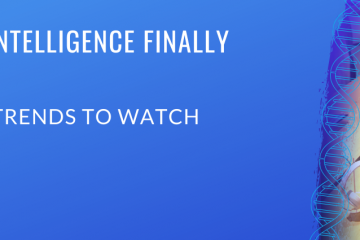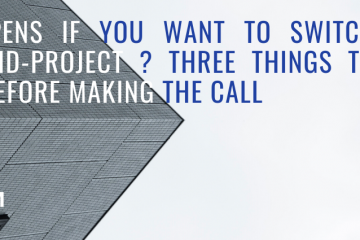There are a lot of excellent reasons why companies pursue experimental projects in addition to their main product. First and foremost, there’s always the thrill of the possibility that the experiment will take off. Some of the greatest innovations in the history of tech began as experimental side projects. Even Gmail and Twitter started out as experimental projects, once upon a time.
But those success stories are rare, of course. Many experimental projects fail. That’s ok — failure is just a part of the process when it comes to innovation — but it’s also a truth worth facing.
And yet, even though an experimental project’s success is never guaranteed, there are many benefits to pursuing one anyway. Among other things, the challenges of experimental projects can help keep employees engaged. Experimental projects can also grow the company’s overall skill sets and test the waters for new projects or markets in the future. In other words, when an experiment fails, you still learn a lot of good information that you can apply to the next experiment.
For those reasons and others, it is increasingly common for tech companies of all sizes to take on experimental projects in one form or another. However, just because it’s common doesn’t mean it’s easy, right?
For CTOs, managing experimental projects while also keeping a main product or project on track is never a simple effort. Often, the ideas for an experimental project — a new app, for example — may come from a VP or another department head who makes the request without a full picture of what resources or time limitations may be in place. The CTO then gets the fun task of figuring out how to make it all work.
Here are a few of the top strategies and approaches that successful CTOs use to juggle new and experimental projects without putting their main product at risk.
1. Identify the experimental project’s main goals, and then use those goals to determine your approach.
All the same project management guidelines for starting a new project apply just as importantly to an additional or experimental project. Before starting a project, you must have a clear picture of what the project’s goals are. Or, to put it another way, it’s important to understand why your VP is asking you to begin this project, especially when it’s probably already more than a full-time job just to keep your main product on time and within budget.
The answer to this question can help you determine your approach and how you choose to distribute your resources across your projects. For example, if this experimental project is part of an initiative aimed at getting developers more excited and invested in their work by giving them new challenges, you might choose an approach that emphasizes employee development and collaboration. Perhaps you could kick off the project with a 2 day internal Hackathon that gets everyone working and thinking about the project all at once. Or, similarly, you might choose to structure your side project’s team by mixing together developers or engineers who haven’t worked together before to see what magic happens.
Or for another example, if the goal of the experimental project is to supplement customer-identified gaps in your main product, you may choose your team makeup and project management approach to align more closely with your main project’s processes.
On the other hand, if the goal is to test the waters, explore a new area or even potentially a new industry entirely, perhaps a more creative approach — such as developing the project under a new brand — could help separate the efforts and minimize any negative impact to your main product.
2. Have a clear understanding of your current resources before you allocate them — and make a back-up plan in case things change.
By far one of the most common challenges CTOs face when undertaking experimental projects is managing new efforts with limited resources. It’s one thing if your company already has an approach in place for factoring in time for experimental projects, such as Google’s famous 20 percent approach.
But for smaller or growing companies that are new to taking on experimental projects, chances are good they have already allocated 100% of their staff hours to their main product by the time they’re asked to begin an additional project. And often, hiring new staff may not be an option or may not be the best solution, given the experimental nature of the project itself.
So, how do CTOs handle this challenge? First and foremost, you need to have a clear picture of the resources you have — the more detailed, the better. It’s not just a matter of identifying the number or engineers or developer hours. When you’re redistributing resources from your main product onto an experimental or additional project, success depends on understanding how to maximize the efficiency and effectiveness of those resources.
This is especially the case when building and/or breaking out your teams. The more you know your people, the more you’ll be able to harness their individual strengths. The particular mix of skills, experience and talent on your team can make or break an experimental project.
For example, remember that strengths and experience/expertise aren’t always the same thing. An engineer could have the perfect technical background on paper for your experimental project, but may not have the big-picture strengths — collaboration, flexibility, innovation, team work, curiosity — that are essential for the challenges of an experimental project.
Once you’ve done your homework and distributed your teams strategically, it’s also important to have a back-up plan in place, too. For example, it’s common for experimental project teams to only have two or three engineers at first. What happens if one of those people leave the company? Or what happens if an urgent development on your main product requires you to pull one of those engineers back to the main product full-time?
The answer or back-up solution may not always be the same, whether it’s redistributing your team’s workload, pulling in a new team member, hiring a new engineer or seeking outside assistance from a third-party. Regardless, it’s important to have a contingency plan to help manage the new risks that an experimental project can introduce unexpectedly.
Have a back-up plan for unexpected success, as well! Your experimental project may skyrocket or take on a life of its own much sooner than you anticipated. How will you handle rapidly scaling up and shifting priorities in that case?
As they say, the only constant in the tech world is change. Successful CTOs are prepared for that change on all fronts, especially when introducing a new experimental project into the mix.
3. Set realistic expectations and priorities — and communicate, communicate, communicate.
For CTOs in the innovative tech world, being asked to do the impossible is a daily occurrence. A successful CTO’s job is to make the impossible possible, yes; but in real life, there’s no such thing as a project management miracle when it comes to taking on experimental projects.
The key is setting realistic expectations for your experimental project, both in terms of the time it will take to complete it without compromising the main product, as well as the project’s likelihood of meeting its goals.
Of course, in order to set realistic expectations with your VPs, customers and teams, you must figure them out first. This includes deciding on your project management approach (waterfall vs. agile development, for example), setting (and frequently revisiting) project timelines and priorities, and establishing key processes for your teams.
One of the most important processes to establish early on is communication protocols. How will you stay informed about the progress of your experimental project and your main product? At what intervals, with what level of detail, from what sources, etc.? And then, how will you keep your various stakeholders informed of both the progress and challenges the project will face?
To boil all this down into one sentence: there should be no surprises. Whenever you take on an experimental project, you’re introducing some level of risk. Frequent and regular communication is a fundamental strategy for helping to manage that risk.
4. Ask around — both within your company and in your network — and be open to new or creative solutions.
When you’re deciding how to approach your experimental project, you may find the ideas you need to succeed are closer than you think. For example, in the case of developing a new or companion application that enhances your main product, find out what solutions or resources have made similar efforts in other departments in your company a success. If your company has used a third-party vendor for some custom project work, perhaps that same vendor could also be brought in to assist with the experimental project with minimal risk.
Similarly, let your project teams play an active role in proposing ideas for how to make the new project work. The reasoning here is twofold: one, you may hear some proposals or approaches you hadn’t thought of yourself before. And two, they’ll be more invested in going the extra mile if they’re playing a part in designing the path they have to take to get there.
Leveraging your overall network can be invaluable, as well. Without giving away any potentially confidential or proprietary information about your plans, why not ask around in general about what successful strategies others have used for their own experimental or side projects?
In the end, managing experimental projects comes down to a precarious juggling act. You might be able to drop some of the projects you’re juggling if you need to, but there’s one that you must hold on to at all costs — your main product. Make sure you have the right approach, team, expectations and flexibility to adapt to unexpected developments. Then, your experimental project will have the space it needs to succeed, fail or evolve on its own terms, without risking your main efforts.
——————————
Can Genium help your company deliver on your additional/experimental project?
At Genium, we connect forward-thinking companies with world-class developers and engineers. We offer a number of services and flexible approaches that can help you deliver your experimental or additional project without compromising your main product or reputation. For example, we can help you develop and launch a stand-alone product under another brand to minimize risks. Don’t hesitate to contact us today to find out how we can make your innovative vision a reality.


